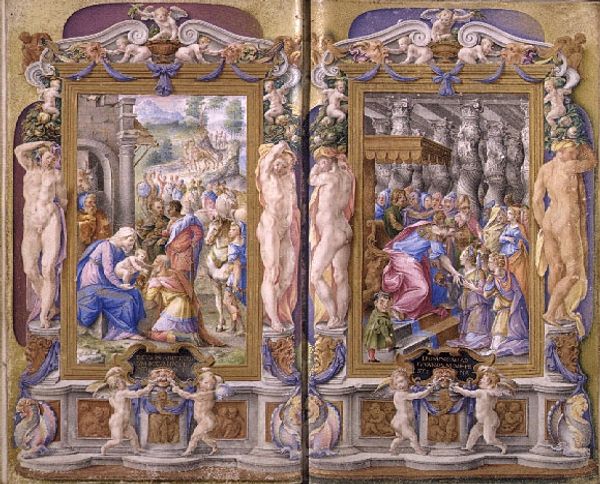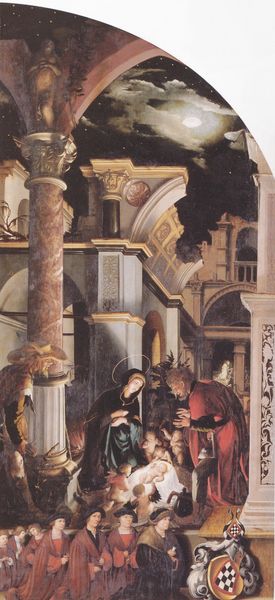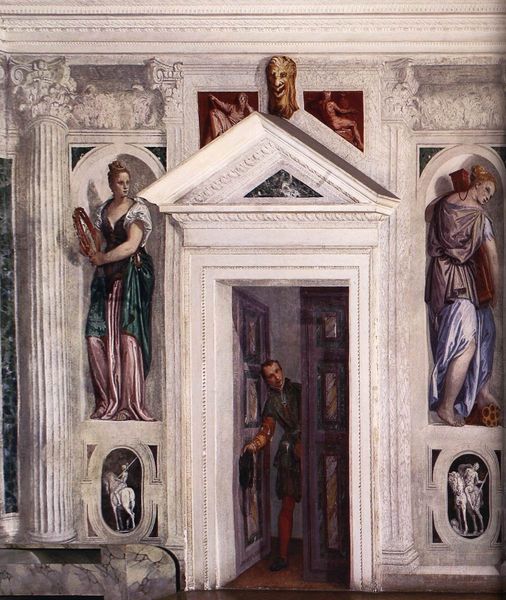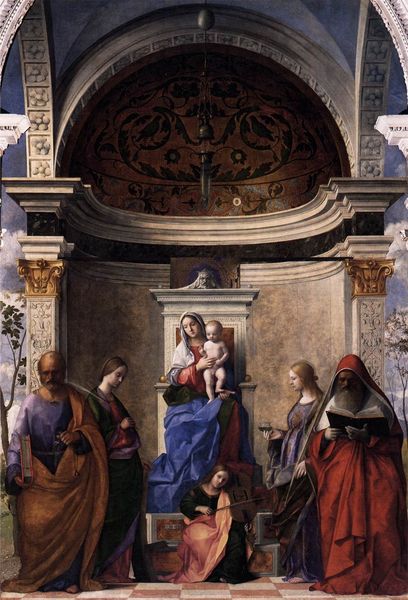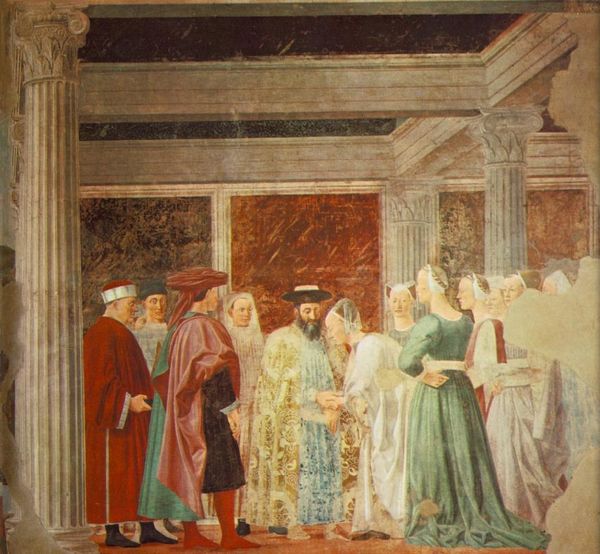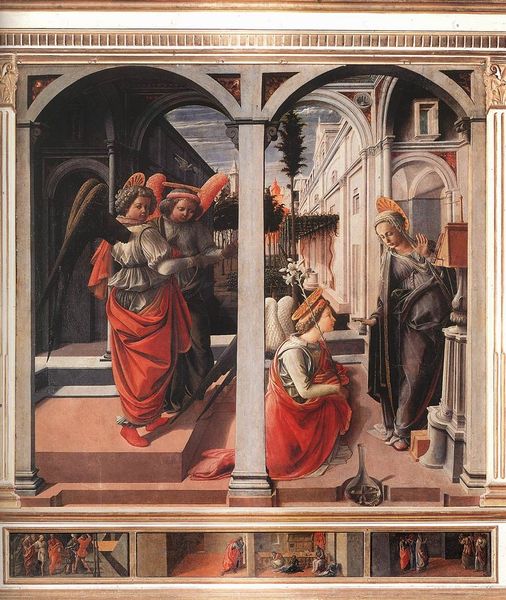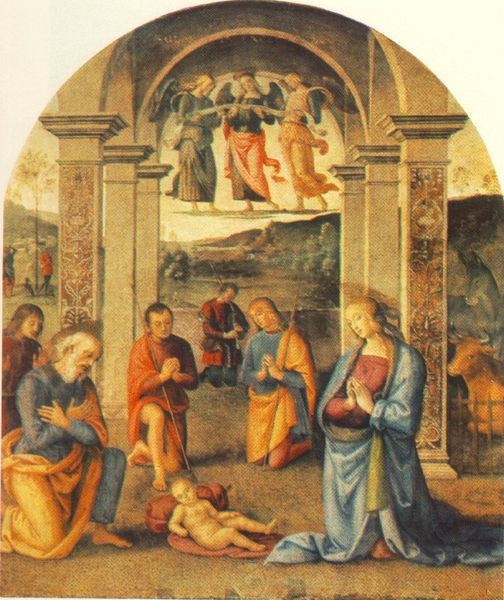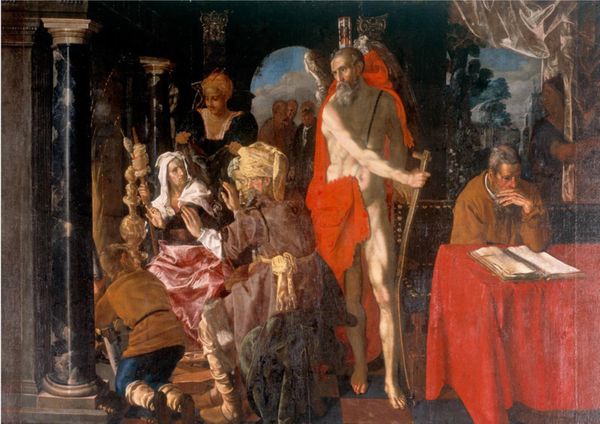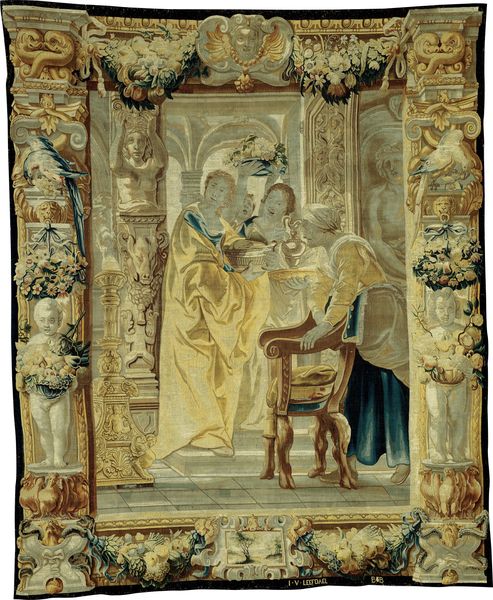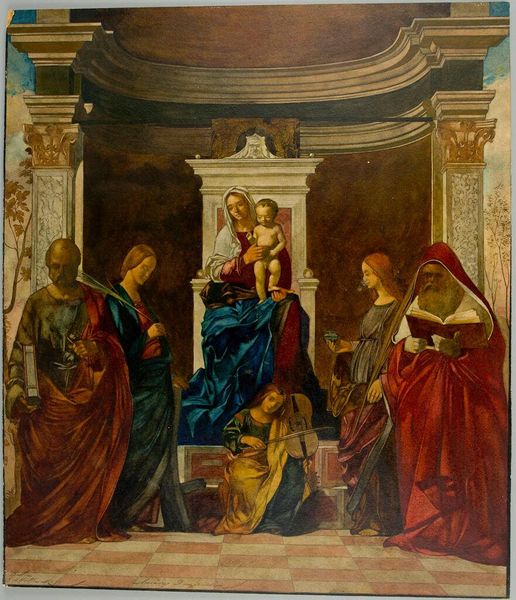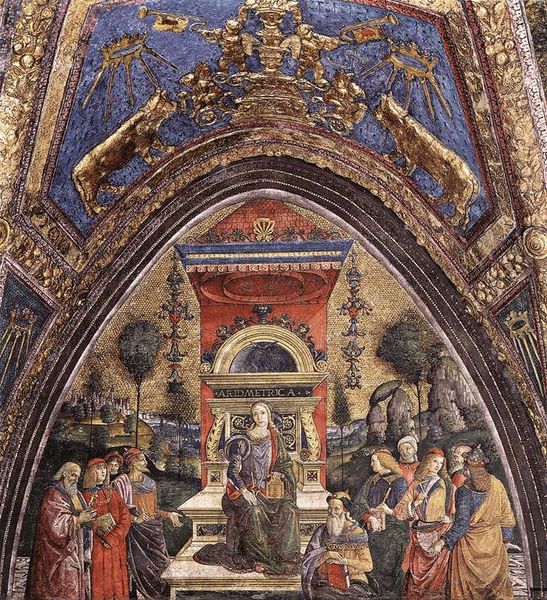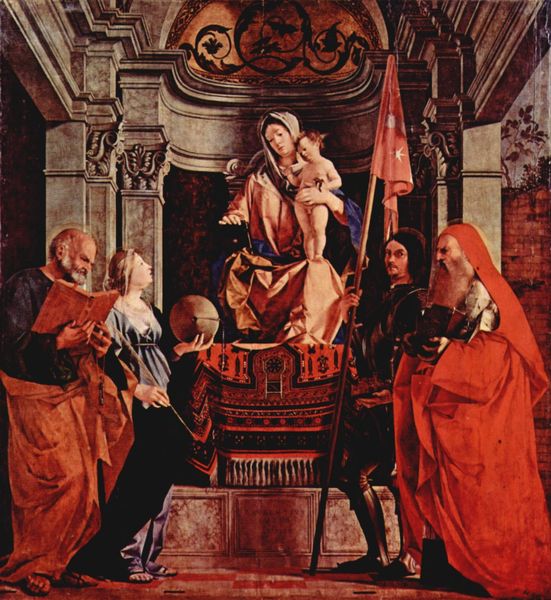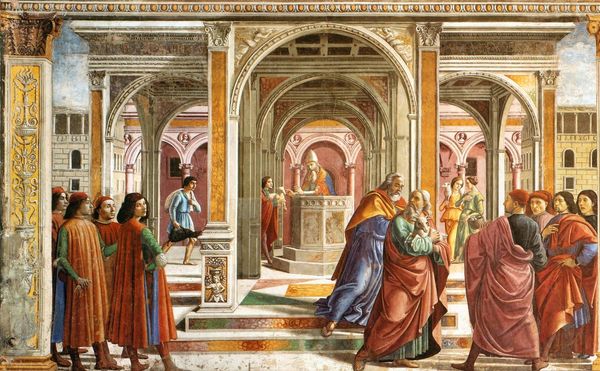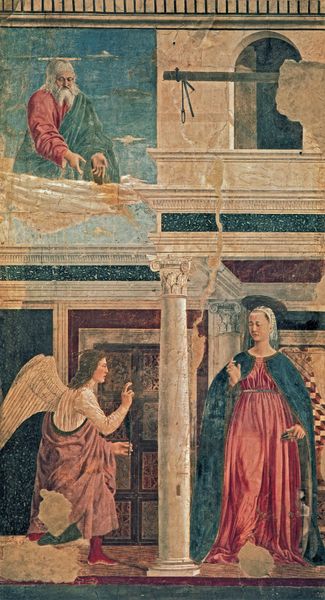
painting, oil-paint
#
narrative-art
#
painting
#
prophet
#
oil-paint
#
holy-places
#
figuration
#
traditional architecture
#
oil painting
#
child
#
christianity
#
history-painting
#
italian-renaissance
#
early-renaissance
#
christ
Dimensions: 86 x 43 cm
Copyright: Public domain
Curator: Well, this is a piece by Andrea Mantegna titled "The Circumcision of Christ" from 1464. Editor: Wow, what strikes me immediately is the incredibly detailed architectural setting. It’s almost like a stage for the figures, coolly distant somehow despite the emotionally charged subject. Curator: Yes, the architecture plays a huge role. Mantegna was really interested in ancient Roman art and architecture. The temple’s ornate details are almost characters in themselves. Notice the friezes, filled with figures, placed in the lunettes. What stories do you imagine those tell? Editor: It's alluding to prior traditions, historical weight – rituals that preceded and predicted the birth of Christ, perhaps. Like a visual echo chamber resonating across millennia. You sense that depth from all those Roman details; they lend authority, but at the same time…detachment? Curator: Precisely, It feels very controlled and almost emotionally removed, like the application of old philosophies to the raw event of religion. It's Early Renaissance figuring out the language of classical ideals through the lens of Christian narrative. Editor: Look how deliberately they are placed. Every figure frozen as though on display like sacred statuary, except, for me, the child in red over on the right: something raw is peeking out through a figure with disarming stillness for what’s about to happen… What about the color choices—those blues, the marbling in the columns? Do they carry specific meaning, or is that just period style shining through? Curator: In Mantegna's paintings, the blues, often made with lapis lazuli, certainly highlight the divine. It directs our attention to Mary and the priest—key figures, central players. But even beyond status, colors themselves held symbolic meaning during this time. Editor: It's the layering, then: style as faith, space as memory. It makes me wonder how audiences back then perceived it differently than we do today—or similarly? Are the anxieties coded into this ritual forever with us now? Curator: Ah, a mystery for another day, perhaps. All I know is that for Mantegna and his viewers, these traditions created not only faith but a system for the world and their very survival. Editor: True; it gives me much to consider about not only then but now, thanks for those enlightening comments.
Comments
No comments
Be the first to comment and join the conversation on the ultimate creative platform.
